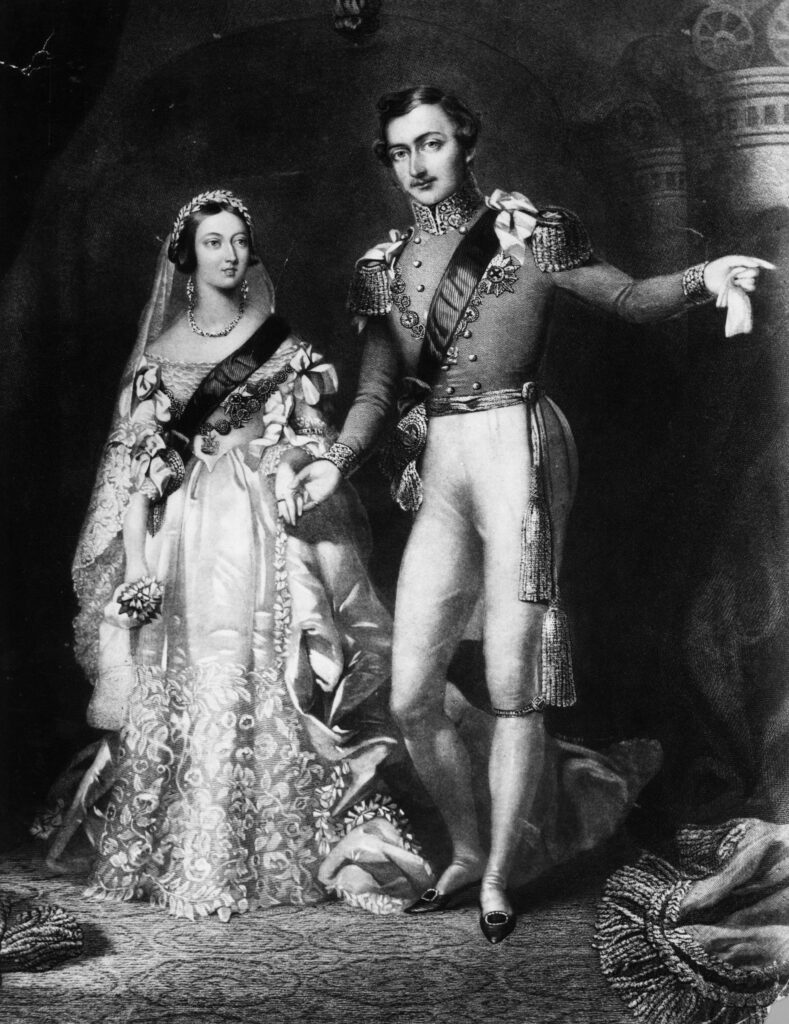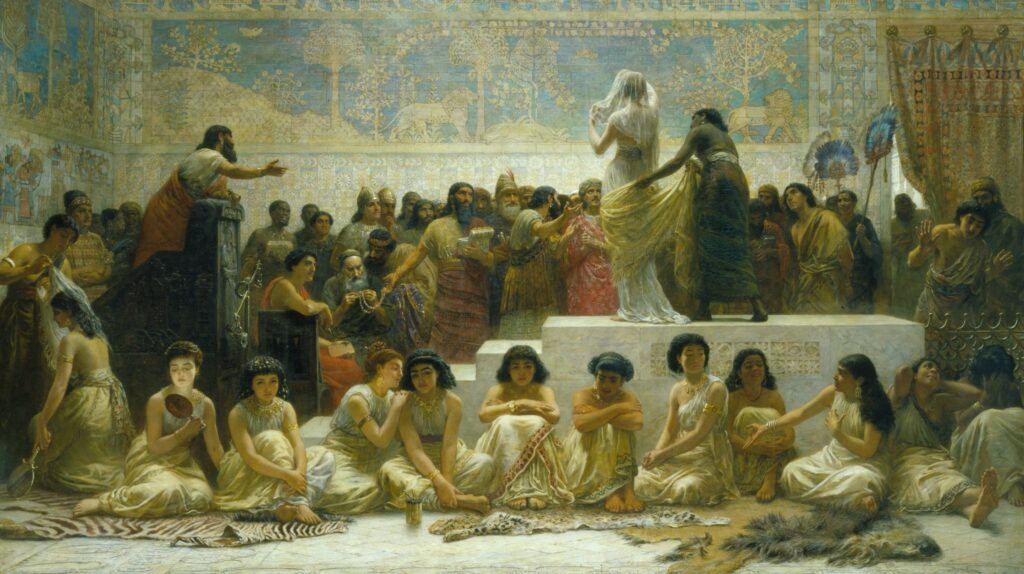June is traditionally a month for brides and weddings. But this was not always the case so let’s take a look back at wedding customs and wedding dresses throughout history.
An amusing reason (but not necessarily a true one) is that most people in olden times married in June because they took their yearly bath in May and still smelled fairly presentable in June. If the brides were starting to smell, they always carried flowers in order to hide their body odor. This started the custom of brides carrying a bouquet.
However, the truth was more likely that in the agricultural communities in Medieval England, the most popular months for weddings were January, October and November before the busy planting season began and after the harvest was over. This was also the time when animals were slaughtered for food so there was plenty of beef, pork and mutton for a wedding feast.
The history of the traditional white wedding dress is shorter than the history of weddings, and even shorter than the history of marriage. And the traditional white wedding dress was not always worn by a bride.
Today we tend to focus on colour, white being popular for Western brides, and red being the more traditional colour for Eastern brides. Bridesmaids’ dresses can be a variety of different shades. But the wedding dress that we call “traditional” is a relatively modern idea.
Marriage itself differs for people who, unlike some other animal species, do not necessarily mate for life. History tells us that although some marriages last for a lifetime, others do not. Marriage has changed throughout time going through various stages; the transfer of property between families; the creation of children and family bloodlines; and even the total control of women by men. Marriage has mostly been a man-woman arrangement although same-sex marriages are also now the norm. And although there have been marriages throughout human civilization, these did not necessarily mean there were weddings.
In ancient Babylon, romantic and erotic love was celebrated in art and poetry. There was also the famous Babylonian marriage market (pictured above), where marriageable young girls were brought before a crowd of men who placed bids for them based on their beauty. The most beautiful were chosen by the wealthy as wives whereas the less attractive who did not sell at the market were offered to the commoners along with money for their upkeep. Either way the women were treated like slaves as the property of a man.
Ancient Athenian brides wore long violet or light red robes with a girdle at the waist which the groom was meant to loosen later to symbolize the loss of her virginity. At the ceremony, the bride was given a quince fruit to bite into like Persephone tasting the pomegranate seeds from the underworld orchards that bound her for life to her new husband Hades.
A wedding dress for the bride in Europe is now usually white, but even this custom is relatively recent and only became more popular when Queen Victoria married Prince Albert in 1840. The colour had more to do with Victorian ideas of virginity and purity.
Up until the middle of the 19th century women were expected to only wear their wedding dress once but that become somewhat impractical during the Industrial revolution and even Queen Victoria was said to have had her wedding dress and her veil re-purposed for more use. Lower-class women usually got married in the best dress they already owned.

10th February 1840: Queen Victoria (1819 – 1901) and Prince Albert (1819 – 1861) on their return from the marriage service at St James’s Palace, London. Original Artwork: Engraved by S Reynolds after F Lock.
The meaning of marriage has certainly changed over the centuries. Although it is often still associated with a woman in a white dress and a man in a tuxedo, things have changed drastically with the increase of the legitimacy and recognition of non-heterosexual unions. The vast majority of people who wish to marry today do it simply with the spirit of love.
Marriage is supposed to be a true partnership providing fulfillment, emotional and spiritual inspiration, companionship and passion—no matter what the bride wears on her wedding day!



